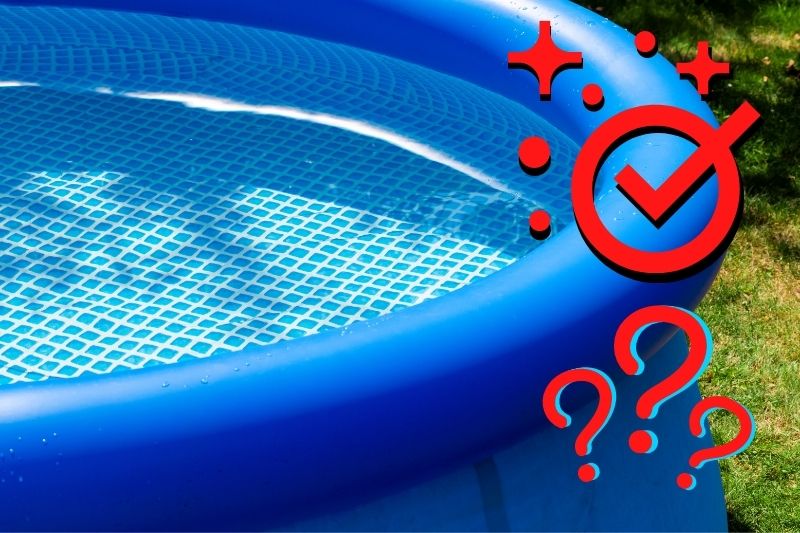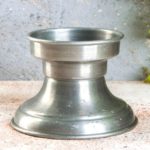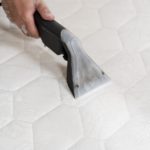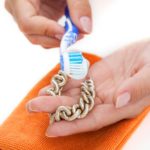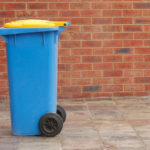When the sun is beating down and you’re too hot to do anything else, jumping in the paddling pool sounds like an epic idea!
And why not! Pools are relaxing, they cool you down and they can keep kids entertained for hours. But…
Paddling pools get dirty really quickly. Grass, mud, leaves, sun cream, even algae can get into a pool. So, how do you keep a paddling pool clean? Let’s dive right in to find out how.
There are lots of ways you can try to keep your paddling pool clean. And most ways are pretty cheap and really easy to do too! Let’s check out how you keep a pool clean.
Remember: Some methods listed below are better for larger paddling pools and/or smaller pools. Also, you should check the paddling pool’s box/instructions to see if you’re advised to/not to use a specific product because this could damage the pool.
1. Drain and Refill Your Paddling Pool to Keep it Clean
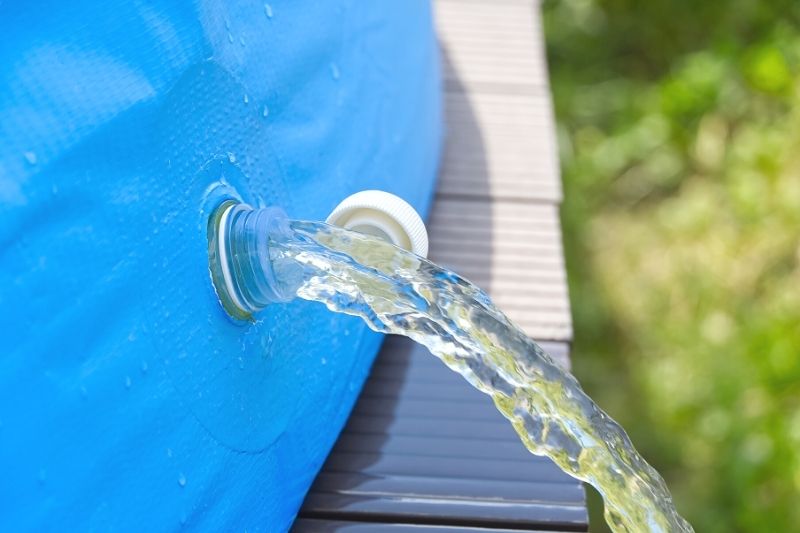
If you’ve got a small kids sized paddling pool then one of the easiest ways to keep it clean, and safe, is to drain it after every use.
Typically, small paddling pools aren’t filled up with gallons and gallons of water, so a lot of people scoop out the water and spread it over their plants in the garden when they’re done. There’s usually nothing too harmful in these small pools, so it’s quite safe for the plants.
Once you’ve removed the water, just grab a clean cloth and wipe the sides of the pool down and turn it upside down for further drainage. Then the next time you want to use the paddling pool just wipe it down with a cloth and some antibacterial cleaner, rinse it well, and fill it up and you’re good to go again!
If you have a bigger paddling pool, you can also drain and reuse the water after every use, it might just take you longer to drain and clean the pool. Just follow the same steps as above. You may not be able to turn a bigger paddling pool upside down, so before you pop the pool away just wipe the sides of the pool down with a dry cloth to soak up any stagnant water.
2. Buy a Floor Sheet/Towel to Put Down Near Your Pool
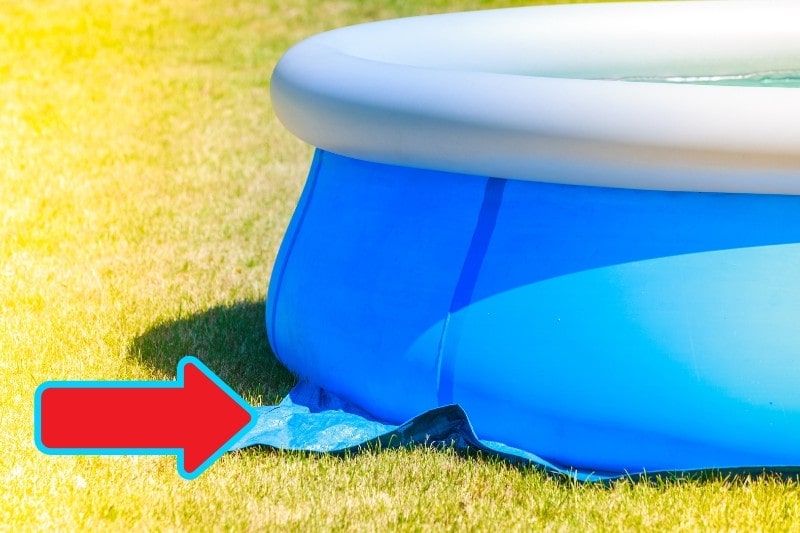
One of the main ways dirt gets into a paddling pool is on foot. So, one of the simplest ways to limit the amount of grime that goes into a pool is by putting a sheet/towel on the floor under/near the pool.
If you use a sheet, it should be much bigger than the pool, and it should be placed directly under the pool. This sheet will help to prevent mud and grass from being dragged into the pool. Similarly, a towel can be placed near the poll so that users can wipe their feet before entering the paddling pool.
3. Place a Water Bowl Near Your Paddling Pool
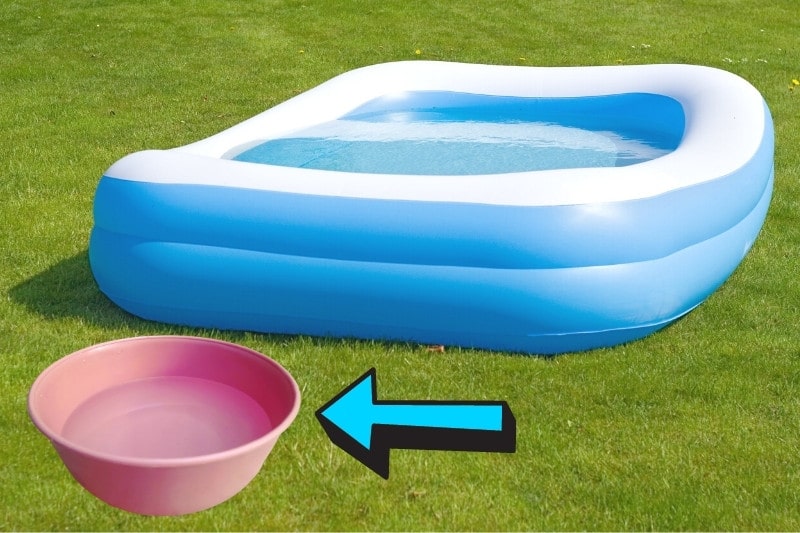
Similar to the above option, you could put a bowl of clean water beside your paddling pool for people to step into and clean their feet in before going into the pool. This will prevent any leaves or blades of grassing from going into your clean pool.
It’s important that you keep an eye on users in case they slip when soaking their feet.
4. Clean Your Pool with White Vinegar and Water
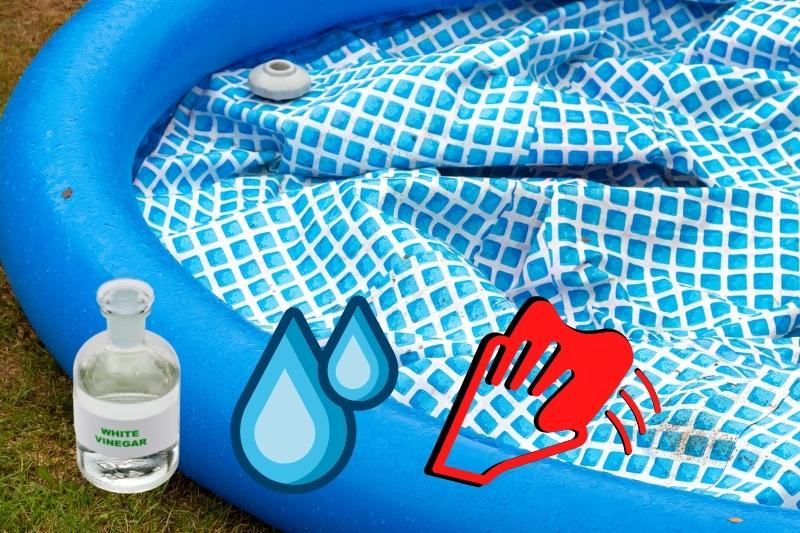
A simple and non-toxic way to clean a paddling pool is to clean it with white vinegar.
White vinegar is great for cleaning because it can remove all the horrid bacteria that sets up up home in your paddling pool. It’s also colourless, so it won’t stain the pool either.
To clean your pool with white vinegar, just follow the steps below:
- Make sure the paddling pool is empty – no water, people or toys!
- Wipe the pool down with a dry cloth – an old towel would do.
- Grab a spray bottle.
- Mix two parts of white vinegar to two parts of water in the bottle.
- Give the bottle a shake.
- Spray the mixture all over the pool.
- Wipe the mixture in and around with a clean cotton cloth – don’t pick a tough sponge!
- Make sure you clear away any slippery areas – this could be algae.
- When you’re done, rinse the pool down several times to remove any excess product.
- Wipe the pool dry – a clean towel would do.
- Before you fill the pool up again, give it a quick rinse down.
5. Use Tennis Balls in Your Paddling Pool to Keep Oils at Bay
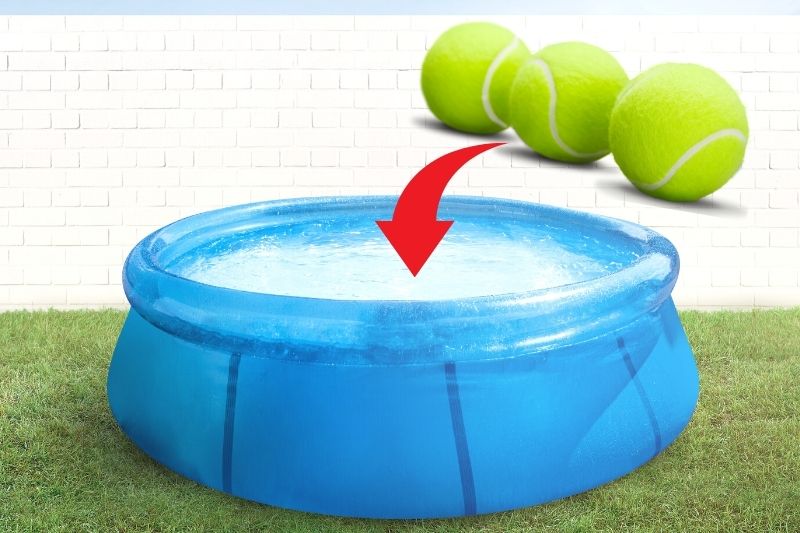
Paddling pools usually make an appearance when the sun is out, which usually means that pool users are covered in sun cream when they go swimming on these warm days.
It’s not a big problem, it’s just that sun cream leaves a glowing sheen on the surface of the water. It can look a little uninviting, but luckily, this can be cleaned away in no time at all.
All you need to do is get a tennis ball, pop it in the pool, and allow the tennis ball to soak up the oily substance. If you’ve got a bigger paddling pool you will need to use more tennis balls.
6. Get a Cover to Keep Your Paddling Pool Clean
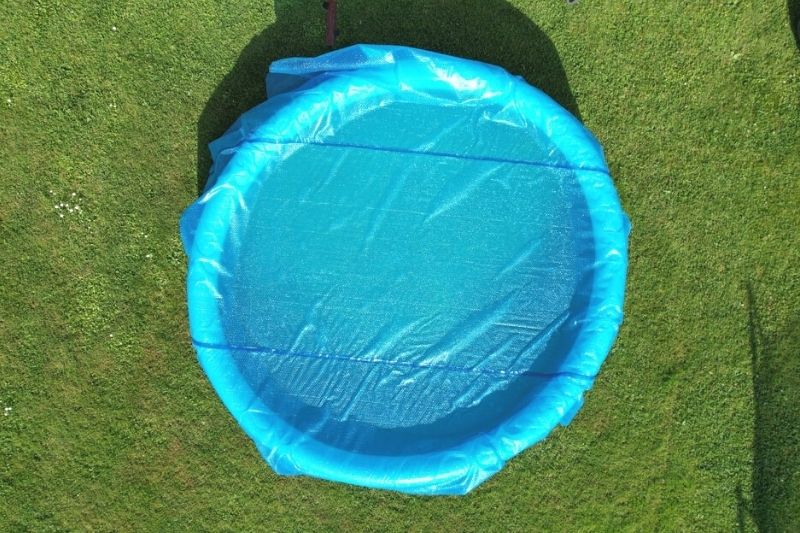
Stray leaves and bugs will always find their way into your paddling pools. So, one way to keep them out is to pull a cover over your paddling pool when you’re not using it.
Covers can be bought in all shapes and sizes, so be sure to buy one that suits your pool. You need something that fits snuggly, so it won’t blow off. On the other hand, you don’t want something too small, so that it doesn’t fit the pool properly.
You can buy covers from most supermarkets, online and from hardware stores. Covers do vary in price and quality.
7. Use Sterilising Fluid and Water to Keep Your Pool Safe
If you’ve got a small to medium sized paddling pool this option would be suitable. All you need to do is grab some sterilising fluid, the product used to keep baby bottles clean, pop a capful into the pool and leave it to dilute in the water.
This method will limit the growth of any algae in the paddling pool. You do, however, need to change the water in the pool after a few days. So, this shouldn’t be viewed as a long-term solution.
8. Try Using Fishing Nets to Remove Debris from Your Paddling Pool

If you don’t have a cover on your paddling pool, trash will inevitably blow into the water. So, here’s a solution to deal with this issue: use fishing nets!
All you need to do is fish out any rubbish you see and dispose of it. This can also be a great pre-pool party activity for kids, and it can even be done before every use.
Plus, it’ll also teach kids about water pollution and how to get rid of rubbish correctly.
You don’t need huge fishing nets, in fact, small sized ones will do for small to medium sized pools.
9. Keep Your Pool Clean with Chlorine and a Filter
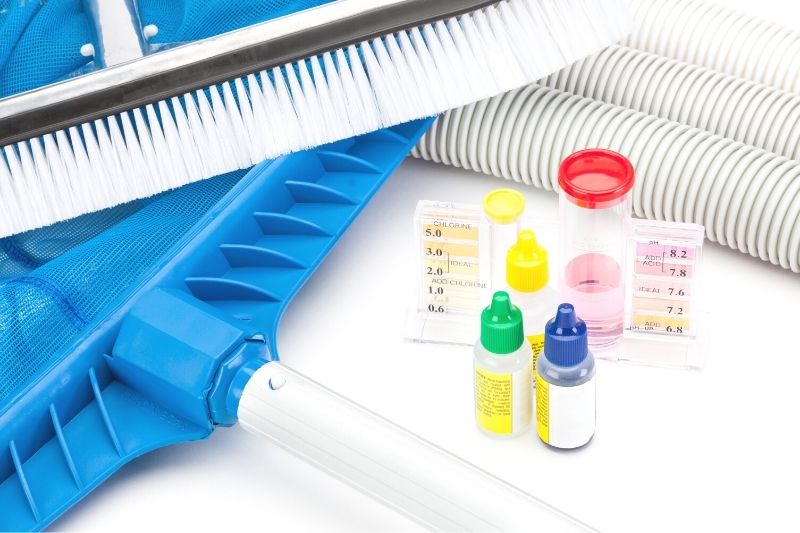
For larger sized paddling pools that are used frequently, it’s important that they are cleaned with a cleaning agent. Big paddling pools are less likely to be drained after every session, so there’s going to be a lot of unseen, and visible, dirt in the water.
The main way to eradicate this dirt and to prevent any health problems for pool users is to use chlorine. Chlorine tablets are most commonly used to clean paddling pools at home.
However, you cannot just drop a few chlorine tablets into the pool, you must buy a filter too.
You can buy chlorine filters from most supermarkets during the summer months, and they’re usually located near the swimming pool aisle. In addition to this, Amazon, Argos and various other hardware stores stock this item all year around.
Remember: Filters should be removed from paddling pools when users are using the pool. You should also make a habit of checking the pH level of the water. If the pH level is too high/low then the pool should not be used. pH testing strips can be bought to test the water.
10. Use Specialised Products to Keep Your Paddling Pool Germ Free
There are a number of pool cleaning products available to buy today. Majority of these products can be picked up in supermarkets or online, and they vary in price.
In addition to this, if you do purchase a cleaning product check the label to see if you need any other cleaning equipment, and make sure it’s suitable for your paddling pool.
However, do keep in mind that while a lot of these items work well, they are not always essential if you only have a small pool, for example.
Bonus Tips
Here are a couple of tips to consider:
- Pools can be quite dirty places, so they do need to be cleaned regularly.
- You should try to prevent too much dirt from getting into the pool in the first place.
- Checking the pH level of the water is essential.
- Consider where you put your pool – under trees or too close to the house is not a good idea, for example.
- Pools should be filled up with water from the tap – other forms of water can contain contaminants that can react with chlorine and cleaners.
How Often Should a Paddling Pool Be Cleaned?
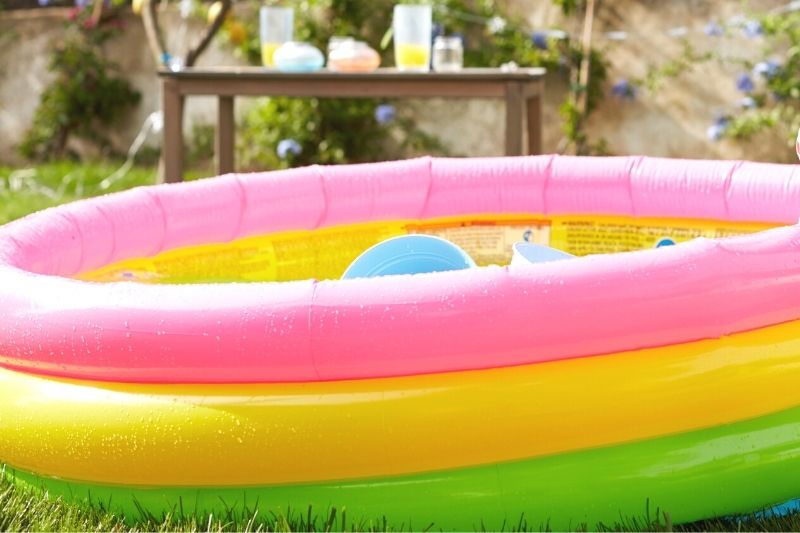
A small kids’ paddling pools can be cleaned after every single use, just repurpose the water.
A medium/large sized paddling pool should come with a chlorine filter, so you can leave the cleaning for a little longer. Although, you should still wipe the sides down, clean your feet before entering the pool, fish out any dirt and cover the pool when it’s not in use.

Bethan has a passion for exploring, reading, cooking and gardening! When she’s not creating culinary delights for her family, she’s concocting potions to keep her house clean!
